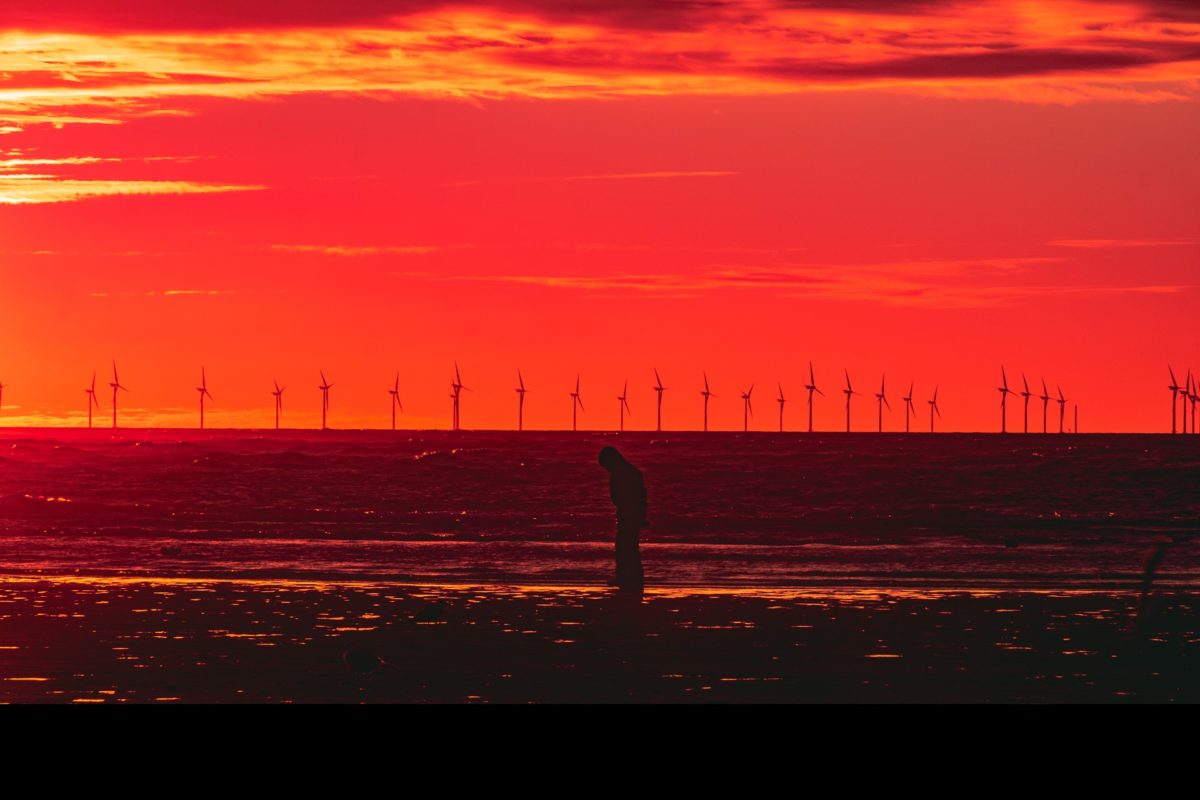As solar continues to grow its share in the world’s energy mix, the issues of land availability and intermittent generation become ever more important to deal with. Combining solar and wind generation has shown several advantages in balancing energy yields over a longer period – since sunny and windy conditions tend to occur at different times.
A recent study from Ireland suggests that adding more solar to the country’s considerable wind capacity could help to stabilize prices in the long term; and plans for large solar-wind hybrid projects are in action all over the world. Meanwhile, on the land usage side, floating solar projects have been implemented successfully on inland waters for several years now, and developers are beginning to consider the much larger challenge of installing PV at sea.
Looking at both of these opportunities to further solar’s growth, scientists led by Utrecht University in the Netherlands carried out a feasibility study for a floating solar installation incorporated into a new 752 MW wind farm located in the North Sea close to the Netherlands southern border. The study is presented in the paper Pooling the cable: A techno-economic feasibility study of integrating offshore floating photovoltaic solar technology within an offshore wind park, published in the journal Solar Energy.
The wind farm in the study is connected to the Dutch grid via a 700 MW transmission cable, and the researchers focus on the optimal use of this cable capacity. The group first combined historic wind and solar irradiance data to calculate the potential energy yield of the wind, and calculated the effects of adding PV in increments of 100 MW – finding, for example, that 300 MW of PV could be integrated at the site, and only 1.72% of its yield would need to be curtailed due to exceeding the cable capacity.
Economic analysis
Factoring in the high investment costs due to limited experience in floating PV at sea, the group finds integrating the two would only be feasible for now with a subsidy to support the technology’s development. However, their calculations show that adding solar could lead to better usage of the connection cable, and that if offshore PV can achieve further maturity the approach could be useful in the future. “The combination of an offshore solar PV system and a wind farm can be beneficial in technical and economical terms,” the scientists state. “We have calculated optimal wind and solar combined capacity given meteorological conditions in the North Sea, showing that curtailment of solar is quite limited.”
The case study also demonstrates that for any potential site for an offshore solar-wind hybrid project, the weather conditions need to be carefully analyzed, along with the costs, to determine the optimal combination and capacity for either technology.
According to a recent report from DNV GL, the North Sea may host around 100 MW of floating solar capacity by 2030, and 500 MW by 2035. The LCOE of offshore PV systems is currently estimated at around €354/MWh but in the future it should be close to that of ground-mounted solar parks.
This content is protected by copyright and may not be reused. If you want to cooperate with us and would like to reuse some of our content, please contact: editors@pv-magazine.com.




In the Netherlands there is 65 Million square meter of unused warehouse and other company roof available. And they have wind force 12 beaufort storms in November. Why this is researched does not make sense to me
it is a tragic, because every project is a risk and owner of roofs are often risk aware. this is because keeping the status is one of the main driver of society?
We have to redefine private and common. A stable energy supply is our all interest so maybe roofs and facades should be a common, to force building owners to build PV?
Also when we can do both, increase earth Albedo and cool down the oceans? So large scale floating Mirror PV(vertical PV with mirrors between) is maybe an idea to cool down the earth and power it at the same time, without risky brightening clouds?